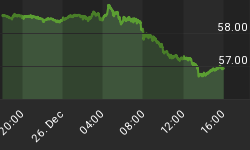
Price-action in FX markets continues to be largely driven by positioning rather than fundamental factors.
The latest CFTC IMM report highlighted a 10% reversal of the largest net short position seen since late 2007. This has occurred while 2-year yield differentials between the Eurozone and US continue to widen to fresh yearly highs.
Speculators have lightened up on short dollar positions primarily due to the event risk spurred by last weekend's G-20 meeting and technical facttors. The perception that QE II may have been fully discounted by markets may have played a role as well.
In the Eurozone, meanwhile, expectations of a possible Q1 ECB rate hike have boosted the trade-weighted Euro Index to fresh 5-month highs. This has created a divergence of sorts, as the EUR/USD failed to reclaim recent highs above 1.41.
The last time this type of divergence occurred was in July. Back then, the Euro Index had just reached a fresh yearly low while the EUR/USD carved out an eventual higher low. The divergence between the two metrics correctly hinted of a short-term (bullish) reversal for the single currency.
While this may portend further EUR/USD weakness, Elliot wave analysis suggests that this is merely a correction within the broader uptrend. The most likely outcome is an eventual upside breakout once the ongoing triangular consolidation terminates.
STRATEGY: BUY EUR/USD at 1.3780, risking 1.3725, targeting 1.4023
















